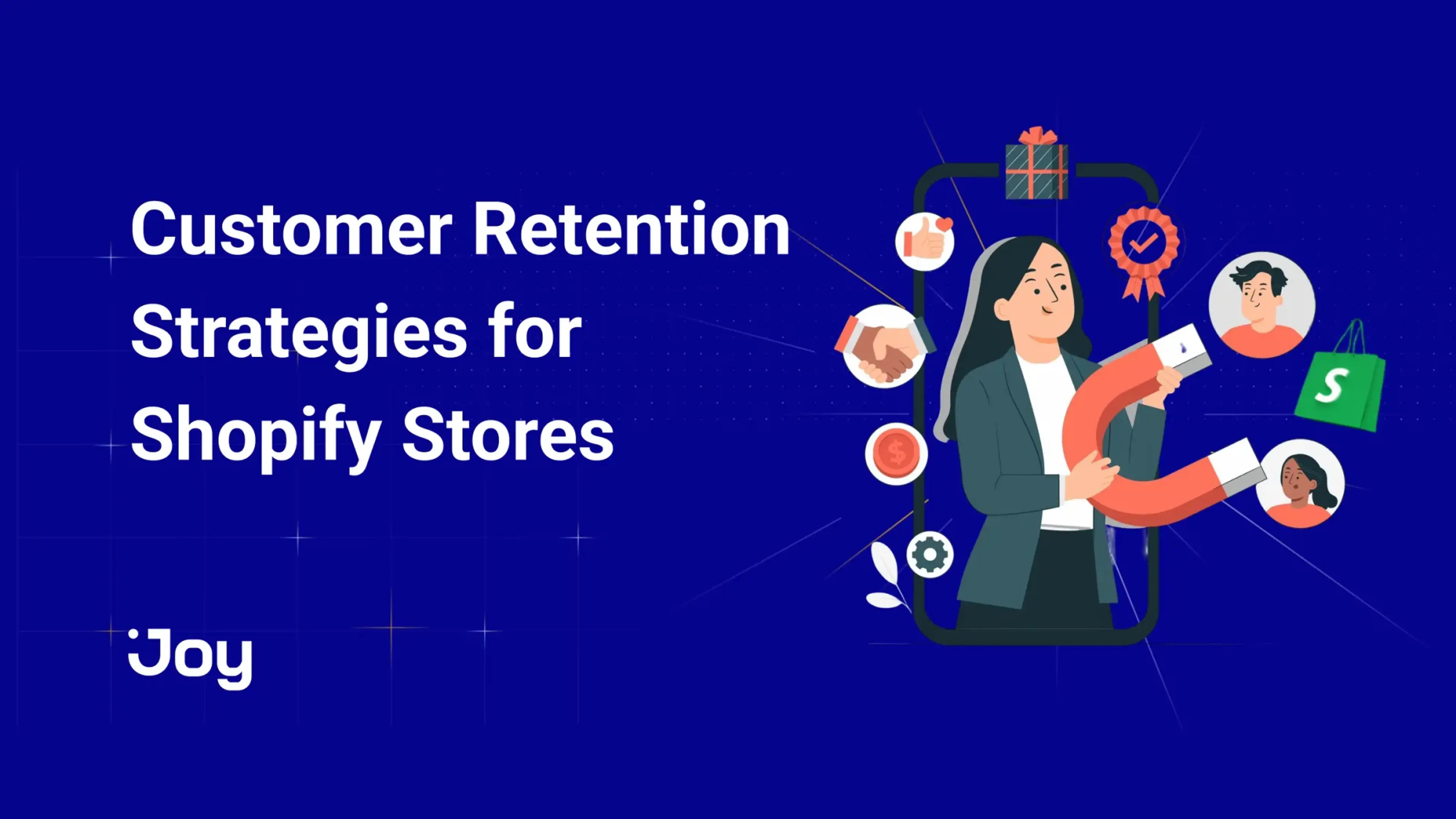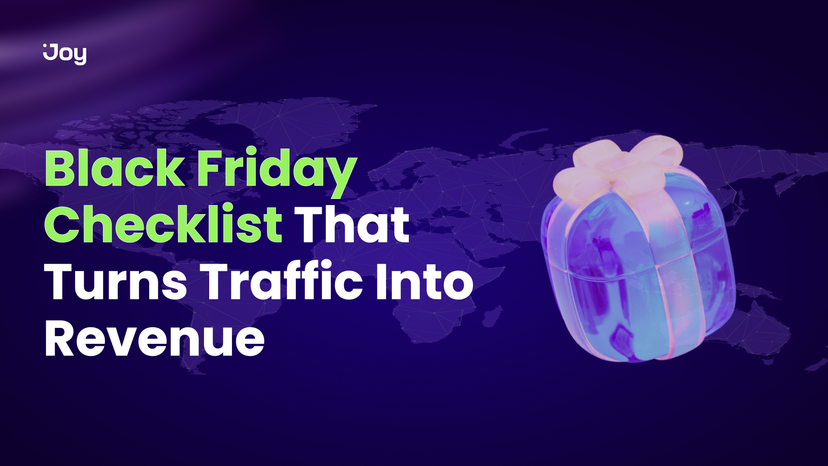Struggling to keep Shopify customers in 2025? High churn rates and low repeat sales can significantly impact your profits.
Our engaging guide tackles these pain points with a user-friendly calculator, 2025 industry benchmarks, and 10 proven tactics to skyrocket loyalty. From personalized experiences to data-driven strategies, these practical tips are perfect for small shops or growing brands.
Let's get started!
Retention-Rate Calculator
Now that we understand how to calculate the customer retention rate, it’s essential to examine how these rates vary across different industries.
Let’s examine the average retention rates by industry to gain a clearer understanding of what to expect in your specific market.
2025 Benchmarks & Trends of Customer Retention
We analyzed CRR data from over 300 Shopify stores across 15 industries in Q1 2025 to help merchants gauge their performance. The table below shows median and top-quartile benchmarks by industry, based on data from Statista.
Industry | Customer Retention Rate |
Media companies | 84% |
Professional services | 84% |
Automotive and transportation | 83% |
Insurance | 83% |
IT services | 81% |
Construction and engineering | 80% |
Financial services | 78% |
Telecom | 78% |
Health care | 77% |
Software | 77% |
Banking | 75% |
Consumer services | 67% |
Manufacturing | 67% |
Hospitality | 55% |
Ecommerce | 30% |
Customer retention rates vary significantly across different industries. While the average typically falls between 70% and 80%, some industries perform much better - or worse - based on how they serve and engage their customers.
- Media (84%) – Highest Retention: Media companies typically have sizable marketing budgets that enable them to reach broad audiences, which helps sustain strong customer retention even without heavy personalization.
- E-commerce (30%) – Lowest Retention: In e-commerce, customers often leave to find better prices or faster shipping options. They don’t feel very loyal to one store. It’s easy to shop around, so stores lose customers quickly.
10 High-Impact Customer Retention Strategies for Shopify Stores
Want to turn one-time buyers into loyal, high-LTV customers? These 10 proven customer retention tactics come straight from Joy, a top-rated Shopify app used by top-performing stores to keep customers coming back.
Let's explore.
1. Turn the Order-Tracking Page into an Upsell Machine
Your customers check order status because they’re already engaged. Instead of a boring “your order is on the way” message, use this high-traffic page to suggest add-ons or bestsellers and turn waiting into more sales.
Here’s how this tactic works:
- Recommend related products that pair with their order
- Add a limited-time offer to create urgency
- Promote a product upgrade while they are still excited
You can use Joy’s “Buy X Get Y” feature to suggest special deals right on your tracking page. Here’s how:
- Install Joy Loyalty from the Shopify App Store
- Select Reward programs from the sidebar menu
- Select the Redeeming program tab and click Add more
- Select Buy X get Y, and start setting up your special deal
It’s a high-intent moment, so don’t let it go to waste.
Remember that you don’t clutter the tracking page with too many offers, or customers might get annoyed and lose trust in your brand.
2. Get Engagement Across Every Channel
The second tactic is to connect with customers on every platform they use. Indeed, your customers don’t just stick to one platform; they move between email, SMS, social media, and your website.
It’s a good idea to initiate the relationship early and maintain the conversation after the sale is complete. When you stay active across channels, customers feel seen and valued, and they’re much more likely to come back.
How to do it:
- Identify all the places where customers interact with your brand (website, email, social media).
- Send personalized messages based on what they like or what they’ve done in the past.
- Share helpful tips, exclusive deals, or ask for feedback to keep the conversation going.
- Invite them to follow you on social media so they stay connected.
However, be cautious: do not overwhelm them with too many messages. If you do, they might stop paying attention or unsubscribe.
3. Roll Out Core Points, Perks & Referral Program
Another high-impact tactic is to offer points, perks, and referrals. These tools give your customers a reason to return and spread the word. When people earn rewards for shopping or sharing your store, they’re more likely to stay loyal.
How to set up points and perks in Joy
- Use Joy Loyalty to launch a loyalty program with custom rules and branding.
- Offer points for purchases, reviews, birthdays, and referrals.
- Set up reward tiers - discounts, free shipping, or exclusive perks.
- Promote your program using pop-ups and embedded widgets.
But remember that clarity is key. If the rewards feel confusing or hard to earn, customers won’t engage. Keep it simple, visible, and rewarding.
4. Unlock VIP Tiers for High-Value Shoppers
VIP tiers aren’t just about perks, as they build deeper loyalty and long-term trust. When customers feel recognized for their loyalty, they’re more likely to stay engaged, spend more, and see your brand as a long-term favorite.
Here’s how to do it
Joy Loyalty enables customers to establish multiple loyalty levels, each with distinct benefits and rewards.
- Create VIP levels, such as Bronze, Silver, and Gold, in Joy.
- Select or set up your entry rewards
- Use banners and customer dashboards to show tier progress.
Remember that you do not promise perks you can’t deliver, as this will hurt customer trust.
5. Birthday Rewards that Spark an Annual Spike
Birthdays are a golden opportunity to boost retention and sales. Offering a special gift or discount then encourages customers to shop from you during their birthday month.
How to do it:
- Collect birthdates at sign-up, checkout, or through loyalty profiles
- Send a personalized birthday email with a special offer just for them
- Make it count: use a substantial reward like a discount, bonus points, or a free gift
- Encourage sharing by inviting customers to post their birthday treat on social media
It's best to avoid sending generic or late messages, as their impact fades quickly if they don’t feel personal or timely.
6. Run a 7-Day “Streak Bonus” Challenge
Short challenges encourage customers to interact with your store on a daily basis, building habits that keep them coming back.
How to do it:
- Use Joy Loyalty to configure a 7-day bonus campaign (e.g., visit, buy, or refer).
- Promote it through banners, emails, and in-store messages.
- Reward completion with a big point bonus or exclusive gift.
- Collect feedback after the challenge to optimize future streaks.
Complicated rules or unclear rewards make it hard for customers to stick with the challenge.
7. Celebrate Milestones to Cement Habits
Recognizing essential moments, such as a customer’s 5th purchase or anniversary, makes them feel valued and encourages them to stay loyal.
How to do it:
- Track key customer milestones, such as the number of purchases or the time since joining.
- Send personalized messages congratulating them with small rewards or exclusive offers.
- Share these celebrations publicly (with permission) for social proof.
- Use these moments to suggest next steps or new products.
8. Use Free-Gift Redemptions to Lift the Basket Size
Offering a free gift when customers spend a certain amount motivates them to add more to their cart to qualify.
How to do it:
- Set a minimum spend threshold for gifts.
- Promote the offer clearly on your website and during the checkout process.
- Choose gifts that customers find valuable but don’t cost you too much.
- Track which gifts perform best and adjust your offer accordingly.
9. Launch a Simple “Share & Earn” Referral Flow
Making it easy for customers to share your store and earn rewards brings in new shoppers and keeps existing ones engaged.
How to do it:
- Activate Joy’s referral widget with customizable messages.
- Let customers share via social media, email, or a link.
- Offer dual-sided rewards, such as points or discounts, for both parties.
- Track top referrers and reward them with VIP perks.
10. Offer Stackable Rewards Without Killing Margin
Allowing customers to combine rewards (such as points and discounts) makes them feel they’re getting tremendous value, encouraging more purchases.
How to do it:
- Design a system where rewards can be stacked, but set limits to protect your profits.
- Clearly explain to customers how stacking works.
- Monitor how stacking affects your margins on a regular basis.
- Adjust the rules as needed to keep rewards both attractive and sustainable.
90-Day Implementation Roadmap
In the first phase, spanning weeks 1–4, the focus is on auditing and quick wins by establishing a Baseline Customer Retention Rate (CRR) and deploying tactics 1–3. This involves reviewing current processes to set the CRR and applying three strategies (like better support or discounts) for fast results.
In the second phase, from weeks 5–8, the goal is automation, enabling expirations, VIP tiers, and a birthday flow. This means automating subscription renewals, creating reward levels for top customers, and sending personalized birthday messages to boost loyalty.
In the third phase, covering weeks 9–12, the focus is on optimization and expansion through milestones, a Rule Engine, and an analytics review. This includes setting goals to track progress, using automated rules to improve interactions, and analyzing 90-day data to find trends and areas to improve.
Customer Retention Strategy Examples That Work
1. Korean Skincare: Full-Funnel Loyalty with VIP Tiers
This Korean skincare brand has implemented a layered loyalty strategy that maximizes customer retention across both transactional and emotional touchpoints. Their program rewards users for purchases, signups, reviews, and social engagement, creating multiple entry points into the loyalty ecosystem.
Strategic Highlights:
- Engagement at Every Step: Earning actions range from high-intent (placing orders) to low-barrier tasks (following on Instagram or signing up for a newsletter), ensuring all visitors can participate regardless of purchase history.
- Social-Powered Growth: Incentivized follows and subscriptions across five social platforms turn loyal customers into organic brand promoters, fueling acquisition while deepening engagement.
- Redemption Variety: Offering both fixed discounts (€5–10) and percentage-based rewards (10–15%) creates perceived value for all order sizes, while free gifts incentivize point accumulation and clear slow-moving inventory.
- Long-Term Retention Mechanics: VIP tiers, milestone rewards, and referral bonuses build a sense of status and community, encouraging repeat engagement. Point expiration drives timely redemptions, keeping users actively involved.
This program demonstrates a well-rounded, retention-focused strategy that turns casual customers into brand loyalists through personalized value and tiered motivation.
2. Yarncom: Simplified Loyalty with Strong Referral Hooks
Yarncom takes a minimalist approach to customer retention, offering essential earning and redemption options focused on purchase incentives and social engagement. While it lacks VIP tiers, the structure remains effective for maintaining loyalty without complexity.
Strategic Highlights:
- Basic Yet Effective Earning Structure: Rewards for placing orders, signing up, and engaging socially (liking on Facebook, following on Instagram) keep participation accessible and frictionless.
- Redemption Simplicity: Customers can trade points for discounts or free shipping - direct incentives that align with transactional motivations and drive conversions.
- Referral-Led Acquisition: The referral program offers a $10 discount for referees and points for referrers, making word-of-mouth a scalable channel for new customer growth.
- Expiration for Engagement: A one-year point expiration cycle prompts customers to return regularly and complete redemptions, reducing churn risk.
Though more basic in design, Yarncom’s program proves that even small-scale loyalty structures can deliver meaningful retention by emphasizing usability, value clarity, and peer-to-peer promotion.
Retention Definitions & Core Metrics
| Metric | Formula | Shopify Path | Tied to Joy Tactics |
|---|---|---|---|
| CRR (Customer Retention Rate) | (End – New) ÷ Start) × 100 | Analytics > Cohort Analysis | Shows loyalty. Key for retention flows & surprises. |
| Churn Rate | (Lost ÷ Start) × 100 | Manual or via Retention apps | Tracks drop-offs. Tied to win-back and engagement. |
| AOV (Average Order Value) | Revenue ÷ Orders | Analytics > Sales over time | Tracks drop-offs. Tied to win-back and engagement. |
| CLV (Customer Lifetime Value) | AOV × Frequency × Lifespan | Analytics > Customer behavior (or app) | Informs loyalty, segmentation, and long-term focus. |
What Each Metric Means:
- CRR: The percentage of customers who make repeat purchases within a defined time period.
- Churn Rate: The percentage of customers who stop buying from your store during a set timeframe.
- AOV: The average revenue earned from each customer order.
- CLV: The total revenue a business can expect from a single customer throughout their entire relationship with the brand.
Shopify Customer Retention FAQs
- What is a reasonable retention rate for Shopify stores?
A retention rate of 35–45% is considered reasonable for Shopify stores, especially in niche or subscription-based markets. This range indicates healthy repeat business.
- How do I calculate customer retention rate on Shopify?
Customer retention rate = ((E-N)/S) × 100, where E is the number of customers at the end of period, N is new customers, and S is customers at start. Shopify doesn’t show this directly, so use reports or apps like Lifetimely to track over time.
- How can I improve customer retention on Shopify?
Offer loyalty rewards, personalized emails, and great service to improve retention on Shopify. Focus on delivering post-purchase value, like helpful follow-ups, exclusive offers, or subscription options. A clear retention plan with segmentation and automation helps convert one-time buyers into loyal customers.
- Does a loyalty program really increase repeat purchases?
Yes, loyalty programs increase repeat purchases by 30–40% on average. They create incentives for return visits, improve brand engagement, and boost lifetime value. Shopify apps like Smile.io or Joy make it easy to set up reward points and tiers.
- How often should I review retention metrics?
Review retention metrics monthly to catch trends early and act quickly. Monthly analysis helps you assess campaign effectiveness, track returning customer rates, and adjust your strategy based on buyer behavior. For fast-changing stores, biweekly checks can offer more agility.
Key Takeaways & Next Steps
- Customer retention is your most cost-effective growth lever. Use the CRR formula to benchmark performance and identify where your store stands compared to industry norms.
- Implement high-impact strategies in phases. From quick wins like upselling on tracking pages to advanced tactics like VIP tiers and automation, follow the 90-day roadmap to boost loyalty steadily.
- Use data to drive continuous improvement. Track retention KPIs (CRR, churn, AOV), run experiments, and adjust your loyalty flows based on what’s working.
Next Steps: Start by calculating your CRR with the embedded calculator above, then pick 2–3 strategies to implement this month. Use Joy to launch a retention system that scales with your brand.



-a7e9a3.png?width=828&q=75&f=webp&auto=format)
